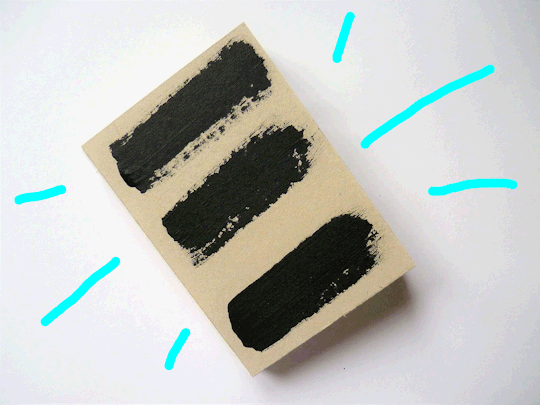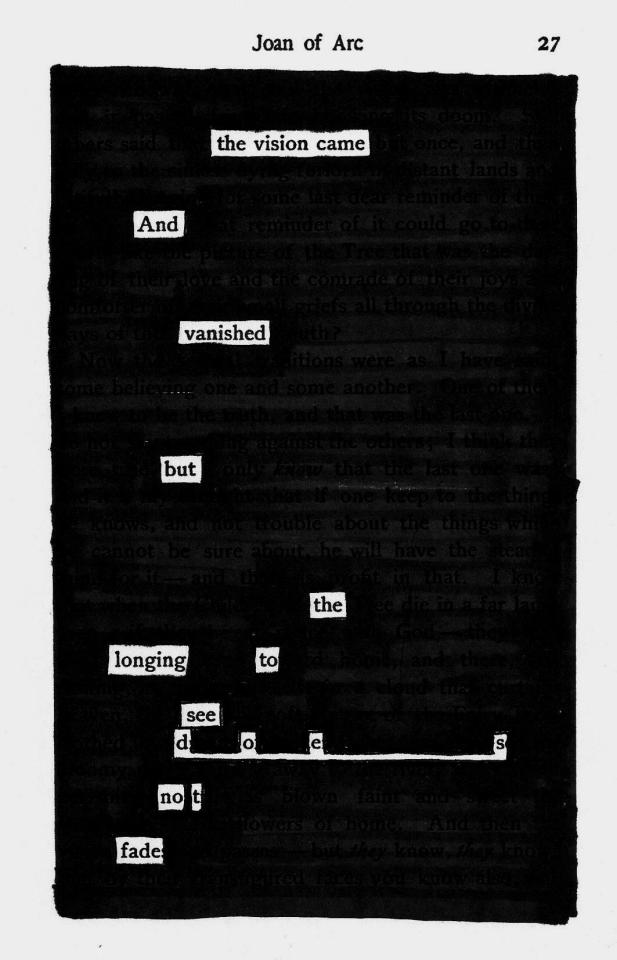Text
Assessment 2 - Concept Statement
As a result of the feedback given from Assessment 1, I decided to continue exploring and further developing the concept of recycling and reusing materials, focusing on the impact of “human intervention” on the environment and the life cycle of paper materials.
I wanted to highlight the importance of sustainability and recycling waste, to show that re-purposed materials can create new and interesting materials. Avoiding waste should be encouraged, especially in contemporary art and design practice, where we are constantly creating and discarding. Many contemporary artists choose to use recycled or reused objects to making art, “turning everyday trash into creative treasures”. When artists adopt this innovative approach, they create “environmental awareness” and help find a good use for unwanted materials.
The act of repurposing trash and materials which would have otherwise ended up in a landfill at best, means we are giving a second lease of life to objects that others have given up for dead. Recycling paper or making paper out of used paper can be shown as an “intervention” in the life cycle of paper, to further its lifespan, even as a result of human activity inflicted on the natural process of tree growth to mass-manufacture paper.
I tried to focus on paper items that I use, or waste materials around the home – a notebook that was filled, unread catalogues that are thrown in my mailbox weekly, daily newspapers that my parents read and discard, local takeaway menus and paper bags from shopping. I experimented with different textured materials, as well as making slight changes to the blending/pulping process to create a varied visual outcome in thickness, texture and aesthetic.
The texture and colours of the final outcome present remnants of the previous material while also metamorphosed into something completely new and usable.
In Assessment 1, I focused on the visual aesthetics of the recycled paper, i.e. how to present it on a poster-form, how it should be trimmed or mounted, etc. I was able to present the pieces in way that showed the beautiful nature of recycled materials and the unpredictable elements in producing them, as well as showing trash doesn’t always have to be “ugly”. As a further developed project, in Assessment 2, I focused more on the actual usability of recycled materials – not just for art and design purposes, but for everyday use. Using all the different recycled sheets of paper I experimented with, I wanted to showcase all the different colours and textures in a unified way. I decided to bind them together in a book form, which would make it a usable product! I found it quite interesting that the idea of humans vs. the environment heavily influences the process of manufacturing paper, and through my “human intervention” of paper materials that are ready to be discarded, I was able to make it usable again, extending its life cycle and allowing for future re-use.
It is also interesting to note the amount of work and continued effort it took to create such a small “notebook” with limited pages – further highlighting how damaging mass-produced products are to the environment. Obviously, we can’t undo the paper that is made but we can do our part in preventing further unnecessary damage to the environment. Producing paper has a high environmental cost – “producing 1 ton of virgin fibre paper requires 24 trees, 32 million BTUs (British thermal unit, traditional unit of heat) of energy and produces 22,219 gallons of wastewater and 1,922 pounds of solid waste”. Recycling paper requires 0 trees!
In producing my final work, I took all of this into consideration, and worked within the restraints of only using recyclable materials. The end product is a fully functional, 100% recycled, environment-respecting, tree-hugging notebook created with love and purposefulness!
Al-Banna, Fatima (2017) “Recycling and Artwork”, EcoMENA, 4 June, 2017, https://www.ecomena.org/recycling-art/, accessed 18 September, 2018
Pirelli & C. S.p.A (2016) “Creative Recycling”, Pirelli, 27 April, 2016, https://www.pirelli.com/global/en-ww/life/creative-recycling-the-art-of-recycling-for-the-environment-and-your-pocket, accessed 18 September, 2018
Temsamani, Ayate (2017) “Ways to Reduce and Reuse Paper Before You Recycle it”, Resource Center powered by Busch Systems, 9 June, 2017, https://www.buschsystems.com/resource-center/page/ways-to-reduce-and-reuse-paper-before-you-recycle-it, accessed 18 September, 2018
0 notes
Text
Assessment 2 - Final Work - "Textures in a Day"



1 note
·
View note
Text
Assessment 2 - Putting it Together






Binding the sheets together using bookbinding techniques. Tried to print text onto some of the thinner sheets - which actually worked!
0 notes
Text
Assessment 2 - Further Experimentation







Getting the hang of producing the paper - easy to customise thickness and level of texture based on paper-to-water ratio and blending time.
0 notes
Text
Assessment 2 - Process & Experimentation







Continuation of Assessment 1 - finding more everyday items that are ready to be discarded.
0 notes
Photo





Lots of beautiful books are up for sale in the shop! Every one of them is unique and ready to be filled up ;)
Etsy Link
154 notes
·
View notes
Text
Slightly dodgy kettle stitch/coptic binding sketchbook making tutorial!

Nobody ever said that your sketchbook binding had to be neat. Well, they might have done, but not in my hearing. So here’s a slightly dodgy, but really not too difficult sketchbook making tutorial. In it, you’ll learn how to cobble together a sketchbook like the one above in pretty short time using a messy version of kettle stitch/coptic binding!
Tutorial after the break!
Keep reading
259 notes
·
View notes
Photo


The tea stained paper from the other night needs pressing.
333 notes
·
View notes
Text
Assessment 1 - Concept Statement
With initial experimentation during studio, where we were tasked to creatively manipulate a sheet of paper, I worked with the material of paper itself, exploring the origins of paper and focusing on the relationship between the environment and humans – more specifically, man-made materials. During initial brainstorming, I wanted to work with a different material rather than just a printed A2 poster. Working off the experimentation I did in class, I decided to use paper as my main material and central focus of the poster. I wanted to highlight the importance of sustainability and recycling waste, to show that re-purposed materials can create new and interesting materials. Avoiding waste should be encouraged, especially in contemporary art and design practice, where we are constantly creating and discarding. Recycling paper or making paper out of used paper can be shown as an “intervention” in the life cycle of paper, to further its lifespan, even as a result of human activity inflicted on the natural process of tree growth to mass-manufacture paper.
I tried to focus on paper items that I use, or waste materials around the home – a notebook that was filled, unread catalogues that are thrown in my mailbox weekly, and daily newspapers that my parents read and discard. I experimented with different textured materials to create a varied visual outcome in thickness, texture and aesthetic.
I mounted 3 pieces of “paper” onto a larger sheet of plain white paper, to present in an aesthetically pleasing format, to show that re-purposing waste doesn’t always have to mean the result is junk – it can look nice too! I decided not to add text or print anything on the paper as I didn’t want to take away from the rawness of the recycled material. The texture and colours of the final outcome present remnants of the previous material while also metamorphosed into something completely new and usable.
1 note
·
View note
Text
Assessment 1 - Final Work

2 notes
·
View notes
Text
Assessment 1 - Results
3 materials, blended to a pulp, recycled to make paper -

1 note
·
View note
Text
Assessment 1 - More Process
Newspaper pulp:

Blow-drying due to lack of sun:

1 note
·
View note
Text
Assessment 1 - Process
Ripped paper to shreds:

Added water, blended to a pulp - experimented with consistency
More water and longer blend time = smoother consistency and resulted in thinner, weaker paper

Put a screen under the pulp in a tub, set it evenly:

Lift from tub, let water drip:

Press dry with sponge:

Sun dry!

1 note
·
View note
Text
Assessment 1 - Materials
3 types of material:
Chinese newspaper:

Coles catalogue:

Filled notebook:

0 notes
Photo

Mark Twain’s Personal Recollections of Joan of Arc
32K notes
·
View notes

